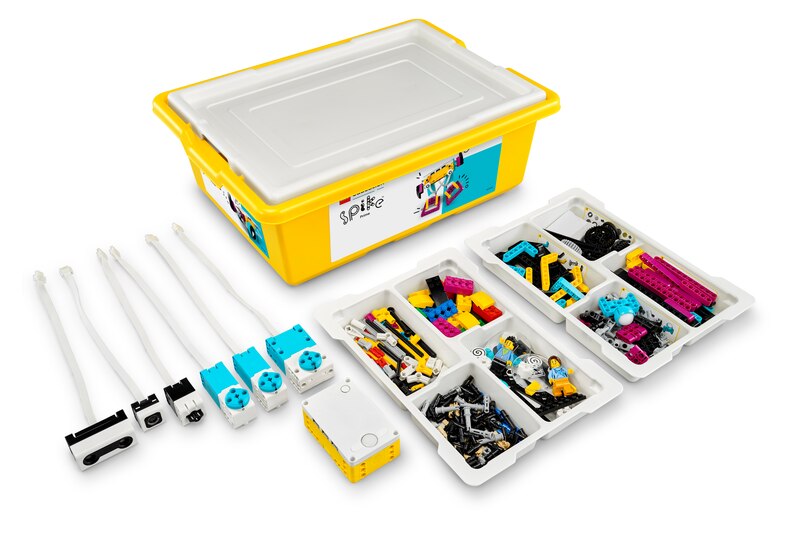Educational Robotics Is a Useful Resource in The Classroom
As of 2023, more schools and educational institutions are using robots to help students learn in a fun and interactive way. Educational robots are changing how students learn by not just focusing on subjects like Math and English but also using fun and interactive methods to learn about technology and computer science. Programming a robot creates a learning environment where students can practice tackling real-world problems and challenges! According to statistics, the global educational robot market had a value of around USD 1.03 billion in 2022, and it’s set to grow at a steady rate of 24.8% every year from 2023 to 2030.
Empowering Minds with Robotic Education for a Brighter Future
In classrooms, educational robotics means students design, build, and program robots to do specific tasks. Think of it like making your own innovative gadgets. Teachers using this constructivist approach help students learn better by getting more involved in class and improving their studies. So, educational robotics is a win-win for both students and teachers!
Challenges When Introducing Robotics to Classrooms
Teacher Expertise:
Many teachers may need more technical know-how to use educational robotics as teaching tools effectively. A lack of prior knowledge and understanding may hamper the teaching process.
Cost Burden:
The expense associated with acquiring and maintaining robots can strain already limited education budgets.
Curriculum Integration:
Integrating robotics into the curriculum can be time-consuming and may disrupt established lesson plans.
Age-Appropriate Technology:
Ensuring the robotic technology is suitable for the student’s age and aligns with educational goals can be challenging.
Training Needs:
Teachers may require proper training to effectively incorporate robotics into their teaching methods, for which additional hours need to be dedicated.
Integration Strategy:
Adding educational robotics to lesson plans and connecting it with subjects like Math, Art, and Science can be tedious
#5 YouTube and Video Tutorials:
Numerous YouTube channels and tutorials actively teach Python programming. Video content can be a helpful supplement to your learning.
#6 Python Coding Challenges:
Learning Python programming will significantly enhance your problem-solving abilities and coding proficiency when regularly participating in coding challenges on websites like LeetCode, HackerRank, and CodeSignal. These platforms offer diverse coding challenges, from basic to advanced, which will help you reinforce your Python skills and gain confidence in tackling real-world programming tasks.
#7 Online Certifications:
Obtaining online certifications in Python through virtual learning platforms can be valuable when seeking employment opportunities. These certifications serve as tangible proof of your proficiency and dedication in learning Python programming. They can bolster your resume and provide a competitive edge in the job market, as employers often value certified individuals who can immediately contribute to their projects. Additionally, these certifications may open doors to career advancement and higher-paying roles within software development
The LEGO® Education SPIKE™ Prime Set makes educational robotics more accessible and engaging in classrooms. Here’s how
Easy-to-Use:
It offers a user-friendly platform suitable for students of various ages. This means teachers and students can get started without extensive technical expertise.
Hands-On Learning:
SPIKE™ Prime encourages hands-on learning. Students get to build and program their robots using LEGO bricks, making the learning process interactive and fun.
Cross-Subject Integration:
It seamlessly integrates with subjects like Math and Science. Teachers can create lessons that connect robotics with these core subjects, making learning more meaningful and practical.
Coding Skills:
Students learn coding through a visual programming language, which is beginner friendly. This helps them develop crucial problem-solving and computational thinking skills.
Collaboration:
SPIKE™ Prime promotes teamwork as students work together to build educational robotics and program them. It enhances their interpersonal skills and ability to solve problems as a group.
Real-World Applications:
By working on projects with SPIKE™ Prime, students can tackle real-world challenges, which prepares them for future problem-solving in various fields.
In conclusion, educational robotics is not just a trend; it’s a transformative force in modern education. As explored in this blog, it offers a dynamic and interactive learning experience, fostering critical thinking and problem-solving skills.
While challenges exist, such as teacher training and budget constraints, they are surmountable. Moreover, innovative solutions like the LEGO® Education SPIKE™ Prime Set exemplify how educational robotics is becoming more accessible and engaging in classrooms.
As we move forward, educational robotics’ potential to empower students and teachers is boundless. It is paving the way for a brighter, more innovative future where learning is effective and enjoyable.






Recent Comments